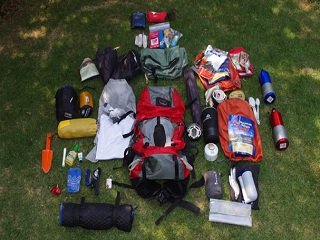 One of the most important parts of a hiking trip—and one of the most overlooked—is loading your backpack. Your backpack needs to carry all the necessary gear for you trip, but knowing how to load said gear properly, so that you don’t hurt your back during the trip is very important. There are a few things to know when it comes to loading a backpack, so grab a seat and read on to learn how you can avoid discomfort and potential damage to your gear the next time you hit the trail.
One of the most important parts of a hiking trip—and one of the most overlooked—is loading your backpack. Your backpack needs to carry all the necessary gear for you trip, but knowing how to load said gear properly, so that you don’t hurt your back during the trip is very important. There are a few things to know when it comes to loading a backpack, so grab a seat and read on to learn how you can avoid discomfort and potential damage to your gear the next time you hit the trail.
Perhaps the most important factor in properly loading a backpack is weight distribution, which will vary slightly depending on whether you’re hiking level terrain or making your way off-trail. Either way, you want to make sure to put the heaviest items near your back and between your shoulder blades. For level terrain, place these items higher, so that they’re above your hips, which are well-equipped to carry large loads. Off-trail trekkers will want to place heavier items a bit lower, as this will lower your center of gravity and give you more balance when negotiating potentially precarious paths. Each of us is different, however, so you might want to experiment with, or tweak, your setup a little to see what works best for you.
When it comes to actually loading your pack, sometimes it’s easiest to lay all your gear out in front of you beforehand, so that you have everything there. I always advise to start with the sleeping bag, which can be stuffed into the bottom of your pack’s main compartment. If you’re taking fuel, make sure it’s sealed completely and always keep it stored below food, just in case of a leak or spill. Also, if you’re taking pots bowls, stuff smaller items inside of them to conserve space and utilize the empty space within such items. You’ll also want to keep the items you use most—GPS, flashlight, bug spray, first aid, etc—readily available.
One item that I feel is a precious commodity is the caribiner. These come in several shapes and sizes and are so very useful for carrying smaller items, or even large ones, outside your pack. Many products, such as bug repellent, sunscreen, and smaller items, can be clipped to a caribiner and fastened to a loop on your backpack strap or pocket, and not utilizing such a feature would be foolish.
Try not to allow your pack load to exceed 30% of your own body weight, as this may cause injury and may also damage the pack itself. Save space where you can and pack only the necessary items first, then branch out from there with other items. Learn the ins and outs of your pack and make sure to take full advantage of its design by implementing features such as loops and straps. A properly loaded backpack will be less cumbersome than one may originally believe, and can mean all the difference in a good day on the trail and a bad one.








